Bhaktapur City
Bhaktapur City, “The City of Devotees” is located in east corner of Kathmandu Valley, Bagmati Province of Nepal. It is one of the three main cities of the Kathmandu Valley. It is also the smallest district of Nepal. It covers an area of 6.889 km2 (2.660 sq mi) and lies on the elevation of 1,401 m (4,596 ft.). Located about 13 kilometers (8.1 mi) from the capital city, it offers a unique blend of tradition and heritage, making it one of the most popular tourist destinations in Nepal.
It is a city where history lives on in every corner, where the past seamlessly blends with the present, and where every street, temple, and courtyard tells a story of artistic mastery and devotion. Its timeless elegance, peaceful atmosphere, and stunning landscapes make Bhaktapur City a place of both beauty and soul. The city’s beauty lies not just in its centuries-old monuments but also in its ability to preserve the charm of a bygone era, where time seems to have stood still.
As part of the Kathmandu Valley, it shares its history, culture and language with the other cities of the valley. It is also known as the Khwopa and Bhadgaon by the Locals. Bhaktapur is one of the most visited tourist destination of Nepal with the city attracting 301,012 tourists in 2014. The city is also famous for its numerous festivals and carnivals like the spring festival of Biska Jatra and the carnival of Saparu (or Gai jatra) both of which are significant part of the local culture and c
Due to its well preserved medieval nature, UNESCO inscribed Bhaktapur as a World Heritage Site since 1979.ontribute well to tourism.
It is also called the “Capital of Music and Dance” due to presence of over 200 types of traditional dances, most of which are masked dances and expect for a few, are a part of the annual carnival of Saparu (or Gai jatra). Bhaktapur City is also famous for its cuisine with the Juju Dhau, a type of yogurt made from buffalo milk being the most popular. Bhaktapur’s potters and handicraft industries are also known nationwide.
You may also like: Kathmandu City
Wandering through the narrow, cobbled streets of Bhaktapur City feels like stepping back in time. The streets are lined with traditional Newari houses with wooden windows, open courtyards, and beautifully crafted facades. These lanes are not just passageways but a visual treat, offering glimpses of hidden temples, shrines, and locals engaged in their daily activities. Whether it’s the deep red bricks of the city’s ancient buildings, the colorful flowers adorning temple courtyards, or the vibrant hues of traditional Newari clothing, Bhaktapur is filled with color. The city’s vibrant palette is most evident during festivals, when the streets are decorated with flags, lamps, and flowers, enhancing its already enchanting beauty.
10 Must Visit stunning Places of Bhaktapur City
1. Bhaktapur Durbar Square

Bhaktapur Durbar Square undoubtedly stands as one of the best places to explore in Bhaktapur City. Located just 15 kilometers from Kathmandu, Bhaktapur City offers a profound cultural and spiritual experience. In fact, it is the very reason travelers often prefer visiting Bhaktapur. Although the municipality covers only 6.889 square kilometers, it is home to numerous temples and remarkable monuments. Within it lies Bhaktapur Durbar Square, a smaller space that embodies the richness of Newari art, architecture, and history. Here, visitors can sit for hours on the pedestals of rest houses or temples, admiring the magnificent poses of Shalabhanjika, the elegant female figure standing beside a tree and holding a limb.
Moreover, Bhaktapur Durbar Square offers both a religious and historical sightseeing experience, as visitors can witness an equal number of temples and surviving palaces and monuments. Bhaktapur City itself, often described as an anciently choreographed city, has earned the title of an open museum. Here, you can marvel at incredible structures dating back to the 18th century. Among these, the Royal Palace is one of the most captivating attractions.
It is believed that King Jayasthiti Malla built the first palace in the current Durbar area in the late 13th century. Although no remains of this initial palace, Yuthuniman Rajkula, exist today, the current palace still offers much insight into the history and contributions of various kings. However, it is certain that Bhaktapur Durbar Square reached its peak during the reign of King Bhupatindra Malla. He transformed this area into a world of extraordinary architecture, which is why it was added to the UNESCO World Heritage list in 1979, along with the Changu Narayan Temple, one of the oldest temples in Bhaktapur City.
Additionally, Bhaktapur City is often referred to as a “museum of medieval art and architecture” due to its numerous examples of sculptures, wood carvings, and colossal pagoda temples, each dedicated to various gods and goddesses. Located just 15 kilometers from Kathmandu, Bhaktapur offers a profound cultural and spiritual experience.
Major Attractions of Bhaktapur Durbar Square
55 Window Palace
This palace stands as the main architectural structure dominating Durbar Square. Built in the 15th century, it showcases magnificent craftsmanship. A statue of King Bhupatindra Malla, seated on a huge column, can be seen in a prayerful position, honoring God.
Golden Gate
Serving as the main entrance to the palace, the Golden Gate is a true masterpiece. The craftsmanship is so exquisite that it’s often said the artist who created it must have been divinely inspired. Its eternal beauty continues to amaze visitors.
Lion’s Gate
This gate features two beautiful stone statues of Hindu deities on either side. However, a tale says that after the artisans completed their work, a jealous Bhadgaon King had their hands cut off so they could never replicate such beauty elsewhere.
Mini Pashupati Temple
Also known as the royal dream temple, this structure has an intriguing legend. Folklore states that a Bhadgaon King, a devout follower of Lord Pashupati, dreamed of the deity, who instructed him to build a temple in front of the palace.
Vatsala Temple
Dedicated to the mother goddess, this temple is filled with intricate stonework. Known for its “dog-barking bell,” the temple holds a belief that when the bell rings, it signals an impending death.
Nyatapola Temple
Nyatapola is the most famous pagoda in Nepal, with “Nyatapola” meaning five tiers in the Newari language, symbolizing the five basic elements. This is the highest pagoda ever built in Nepal, and its architectural perfection and artistic beauty are unparalleled. It is dedicated to Siddhilaxmi, the tantric goddess of supreme power and success.
Bhairava Nath Temple
Lastly, Bhairava Nath Temple honors Bhairava, the god of terror and death. This temple remains a place of reverence and awe, reflecting the power and fear associated with the deity.
Through these significant attractions, Bhaktapur Durbar Square continues to stand as a testament to the city’s rich cultural heritage and its deeply rooted religious traditions.
2. Changunarayan Temple
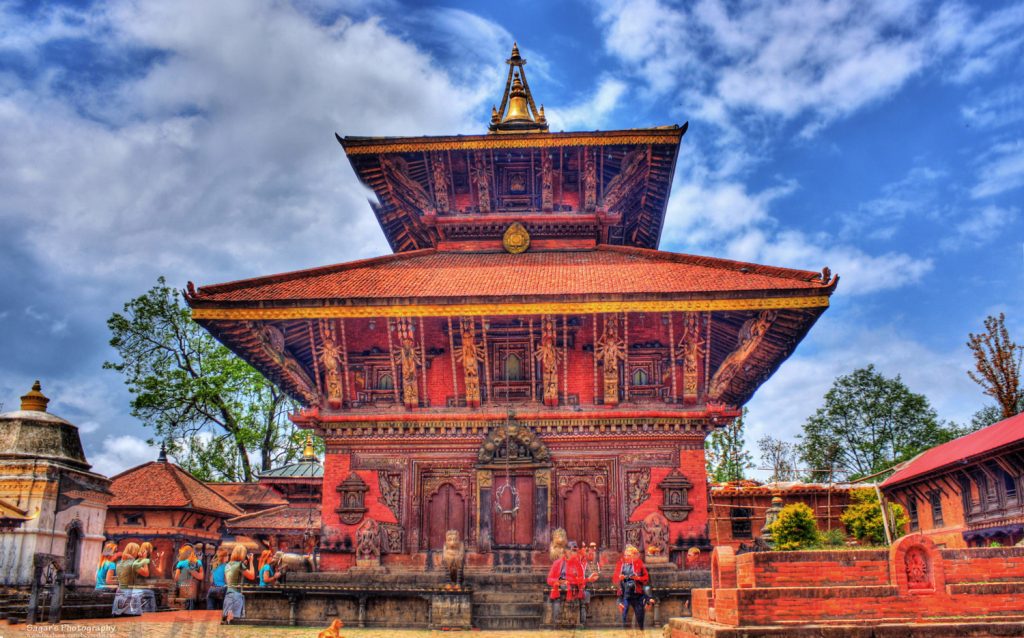
Changunarayan, an ancient Hindu temple, stands proudly on a high hilltop known as Changu or Dolalgiri in Changunarayan Municipality of Bhaktapur District, Nepal. Located about 7 miles (12 km) east of Kathmandu and a few miles north of Bhaktapur City, this temple commands a scenic view, with the Manohara River flowing beside the hill. Revered by Hindus, the temple is dedicated to Vishnu and is considered one of the oldest temples in Nepal.
Additionally, Changu Narayan is one of the most elaborate temples in the Bhaktapur City, known for its rich wood and stone carvings. Originally built in a two-tiered pagoda structure, the temple was reconstructed in 1702 after a fire destroyed the older structure. During excavations, researchers discovered a stone tablet, Shilapatra, dating back to the 5th century, which is the oldest such inscription found in Nepal.
Furthermore, the main courtyard of the temple houses several smaller temples and intricately carved idols of gods. These carvings, created between the 5th and 12th centuries, represent the highest concentration of ancient art in Nepal. The temple was once surrounded by a champak tree forest and a small village named Changu. According to legend, a Kashmiri king gave his daughter, Champak, in marriage to the prince of Bhaktapur, leading to the temple being named after her.
In recognition of its cultural and historical significance, UNESCO declared the temple a World Heritage Site in 1979. Considered the oldest temple in Nepal, Changunarayan serves as a milestone in Nepali temple architecture, featuring rich embossed works and preserving centuries of artistic heritage.
3. Nagarkot

Nagarkot, a former Village Development Committee located 32 km east of Kathmandu in Bhaktapur City, became part of Nagarkot Municipality in 2015. According to the 2011 census, it had a population of 4,571 and contained 973 houses. Situated at an elevation of 2,195 meters, it ranks as one of the most scenic spots in Bhaktapur City. Visitors know Nagarkot for its breathtaking sunrise views of the Himalayas, including Mount Everest and other peaks of the Himalayan range in eastern Nepal. Additionally, it offers stunning views of the Kathmandu Valley, making it a popular hiking destination for tourists.
Moreover, Nagarkot provides one of the broadest views of the Himalayas in the Kathmandu Valley, with eight of Nepal’s thirteen Himalayan ranges visible from this vantage point. These ranges include the Annapurna, Manaslu, Ganesh Himal, Langtang, Jugal, Rolwaling, Mahalangur (Everest), and Numbur ranges. Visitors can also enjoy the views of the Kathmandu Valley and Shivapuri National Park from here.
One key advantage of Nagarkot is its close proximity to the capital. Travelers can easily access Nagarkot from Kathmandu without spending much time or money on travel. Furthermore, accommodation and food are both affordable, making Nagarkot a cost-effective destination that wins on all fronts.
4. Siddha Pokhari
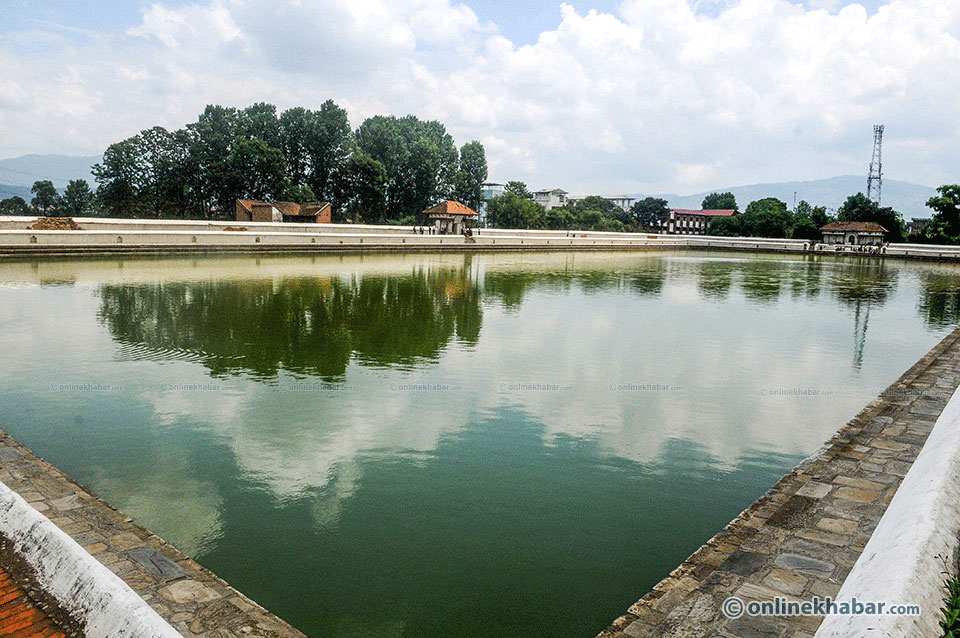
Siddha Pokhari is a large rectangular pond, majestic in its simplicity, surrounded by traditional brick structures and stone statues that reflect the craftsmanship of the medieval Malla period, nestled near the entrance of Bhaktapur City. It is Constructed in the 15th century during the reign of King Yakshya Malla. It is one of the city’s most iconic and tranquil landmarks. This ancient pond, also known as Indra Daha, is a timeless testament to the cultural heritage and spiritual significance of Bhaktapur City.
The pond is not just a water reservoir but a sacred and revered site that holds deep historical and religious importance for the people of Bhaktapur City. The exquisite design and calm waters of the pond make it a picturesque location for visitors, offering a serene escape from the bustling city life. On a clear day, the pond reflects the vibrant blue sky and the architectural beauty of its surroundings, creating a sight that is captivating and peaceful.
Locally, Siddha Pokhari is considered a sacred site, and many people visit it for religious rituals, especially during important festivals like Indra Jatra and Ashwin Krishna Astami. These ceremonies, rooted in the devotional traditions of Bhaktapur City, demonstrate the pond’s continuing role as a center of spiritual activity. For generations, locals have come here to make offerings, believing the pond holds sacred powers that can bring blessings and good fortune.
Beyond its cultural and religious relevance, Siddha Pokhari serves as a serene retreat for visitors and locals alike. The tranquil atmosphere makes it a perfect spot for quiet reflection, leisurely walks, and moments of inner peace. Whether you are a traveler seeking to uncover the hidden gems of Bhaktapur or a local seeking solace, Siddha Pokhari offers an experience that is calming and soothing to the soul.
5. Doleshwar Mahadev Temple
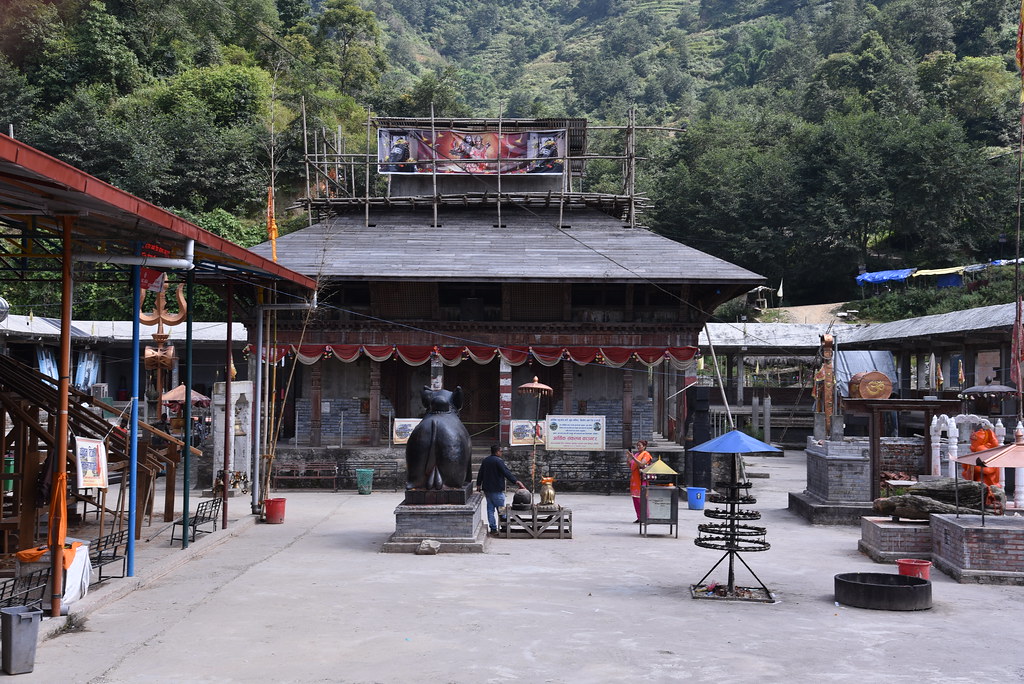
Doleshwar Mahadev, Sacred Shrine of Bhaktapur is a Hindu Temple of Lord Shiva located in Suryabinayak, Sipadol Village of Bhaktapur City, Nepal. Temple stands as a revered and sacred shrine that holds deep religious significance for Hindu devotees.
It is believed to be the head part of Kedarnath temple located in Uttarakhand, India. The current temple structure is spread over 12000 square meters, with multiple ongoing construction. On Aug 22, 2009, the Doleshwar Mahadev was officially declared as the head of Kedarnath, one of the Char Dham Yatra, by Shree 1008 Jagat Guru Bheemashaankarling Shivacharya, the head priest of Kedarnath. For the last 4,000 years, the general population was unaware of the connection between Kedarnath and Doleshwor.
The temple’s timeless and traditional architecture reflects the artistic style of the region, with its exquisite stone carvings and majestic pagoda structure. The shrine is surrounded by peaceful natural beauty, creating an environment of serenity and reflection for those seeking to connect with the divine. The sacred lingam inside the temple is the focal point of worship, drawing thousands of devotees from Nepal and beyond who come to offer prayers, seek blessings, and pay homage to Lord Shiva.
The spiritual atmosphere at Doleshwar Mahadev Temple is especially vibrant during festivals like Maha Shivaratri and Teej, when thousands of devotees flock to the temple to offer milk, flowers, and other offerings to Lord Shiva. These festivals are not only religious ceremonies but also cultural celebrations, where the sacredness of the temple becomes intertwined with the cultural heritage of the region. The sight of devotees gathering in large numbers, chanting prayers, and performing rituals adds a sacred aura to the already mystical surroundings of the temple.
6. Pilot Baba Ashram
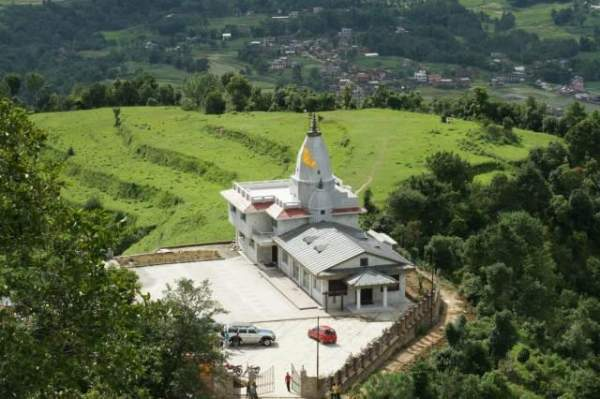
Pilot Baba Ashram, is located in Bhaktapur City, Nepal. The ashram is a spiritual retreat that attracts devotees and seekers from across the world who come to practice meditation, yoga, and spiritual discipline under his guidance. The ashram, surrounded by the serene natural beauty of Bhaktapur City hills, provides a tranquil environment for those looking to deepen their spiritual practice. The peaceful ambiance of the ashram, combined with the teachings of Pilot Baba, creates a space where seekers can find inner clarity, peace, and purpose.
Pilot Baba, a renowned spiritual figure in Nepal and India, is a yogi and spiritual guide whose life journey is as intriguing as his teachings. Born as Kapil Singh, he was once a pilot in the Indian Air Force, which earned him the name “Pilot Baba.” His remarkable transformation from a military officer to a spiritual leader is one of the most compelling stories in the modern spiritual landscape.
Pilot Baba Ashram offers a moderate hike through rolling hills, lush green forests, and panoramic views of the surrounding valley. Starting from the ashram in Sipadol, the route gradually ascends through quiet villages, terraced farmlands, and untouched natural beauty, making it a perfect escape for nature lovers and spiritual seekers. The trail itself provides a mix of easy paths and slightly steeper sections, suitable for hikers of various fitness levels.
7. Ranikot
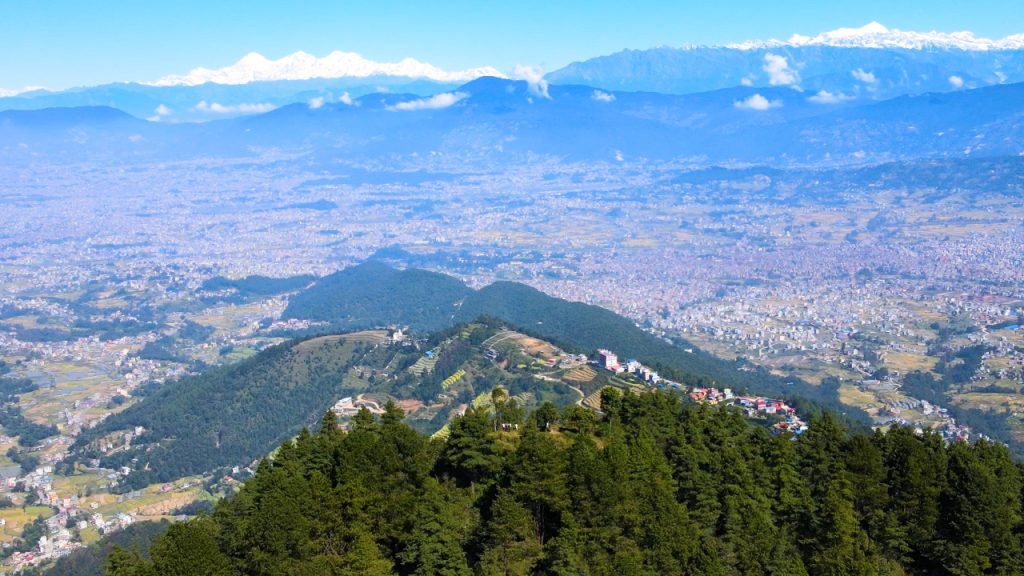
Perched on the lush green hills overlooking the Kathmandu Valley, Ranikot is a lesser-known yet breathtaking destination in Bhaktapur City. Often called the “Queen’s Fort,” Ranikot is a place of immense natural beauty and historical significance, offering visitors a unique combination of panoramic vistas, tranquil hiking trails, and cultural exploration. Despite being less frequented by tourists, this hidden gem is rapidly gaining attention for its scenic landscapes and serene ambiance.
It is believed that the fort once served as a strategic defense post for local rulers, helping them safeguard the surrounding territories from potential invaders. While much of the fort’s original structure has faded over time, the site still offers glimpses of its ancient grandeur. The remnants of the fort walls evoke a sense of mystery and invite visitors to imagine the historical battlesand strategies that unfolded on these hills.
Ranikot is renowned for its spectacular views of the Bhaktapur City, rolling hills, and distant Himalayan ranges. On a clear day, the peaks of Langtang, Ganesh Himal, and Dhaulagiri can be seen gracing the horizon, providing a stunning backdrop to the landscape. The area is surrounded by verdant forests, terraced fields, and peaceful villages, creating an atmosphere of serenity and natural splendor. The calm and quiet environment makes Ranikot an ideal spot for those seeking a break from the crowded city streets and an opportunity to immerse themselves in nature’s tranquility.
For nature lovers and hiking enthusiasts, Ranikot offers several scenic trails that wind through the forested hills, offering stunning views at every turn. One of the most popular activities is a hike from Suryabinayak or Pilot Baba Ashram up to Ranikot, which takes hikers through peaceful woodland areas, charming Newari villages, and terraced farmland. The trails range from easy to moderately challenging, making it suitable for both casual walkers and more seasoned hikers.
At the heart of Ranikot’s appeal is the Village Highland Resort, a popular spot for visitors seeking a tranquil getaway. The resort blends luxury with nature, offering comfortable accommodations with sweeping views of the hills and valleys. For those who want to spend a night in Ranikot, the resort is an ideal place to relax, soak in the beauty of the surroundings, and enjoy stargazing in the clear night sky.
8. Kailashnath Mahadev/ Sanga Mahadev
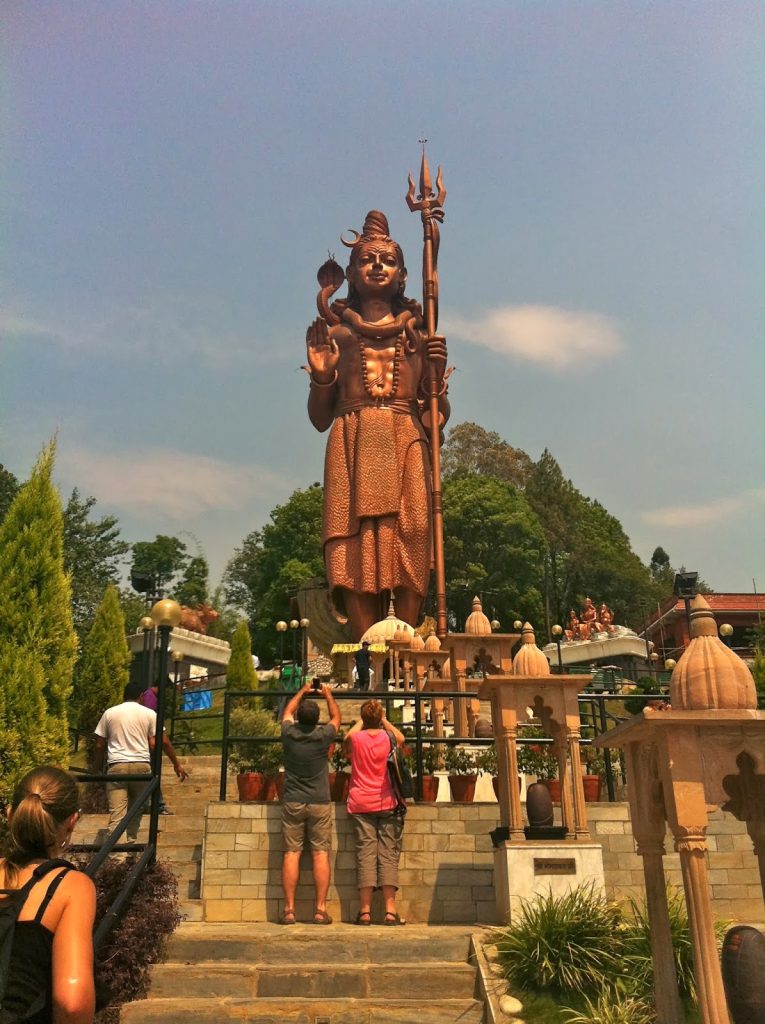
Sanga Mahadev also a home to the Nepal’s tallest Shiva statue is located in Sanga on the border of Bhaktapur City and Kavrepalanchok districts. Towering at an impressive height of 143 feet (43.5 meters), this majestic statue has turned the quiet hillside of Sanga into a major pilgrimage site and a popular destination for both spiritual seekers and tourists. The temple, set against the backdrop of rolling hills and lush greenery, offers a unique blend of spiritual significance, architectural grandeur, and breathtaking natural beauty.
At Sanga Mahadev, the towering statue serves as a powerful reminder of Shiva’s omnipotence and his role in the cosmic cycle of creation, preservation, and destruction. Pilgrims visit the site to offer prayers, perform rituals, and seek blessings from the deity. The temple has become a focal point for religious ceremonies, where devotees light incense, offer flowers, and pour sacred water over the lingam (a symbolic representation of Shiva).
Sanga Mahadev is located on a hilltop that offers panoramic views of the Bhaktapur City and the surrounding countryside. The temple area is surrounded by beautifully manicured gardens and serene pathways, allowing visitors to relax and enjoy the natural beauty of the region. The area’s quiet and peaceful environment is a welcome escape for those looking to leave behind the noise and stress of the city.
9. Ghyampe Danda

Ghyampe Danda is located about 15 kilometers from the heart of Bhaktapur City. Ghyampe Danda is a picturesque hilltop known for its breathtaking views, tranquil environment, and growing popularity as a getaway for both locals and tourists. Located about a 30-minute drive from the main city of Bhaktapur City, Ghyampe Danda offers a perfect retreat for those seeking peace and nature, away from the hustle and bustle of urban life.
The vantage point at Ghyampe Danda is perfect for sunrise and sunset views. Many visitors come early in the morning to watch the sun rise over the mountains, casting a golden glow across the valley, or in the late afternoon to witness the changing colors of the sky as the sun sets behind the hills.
Hiking is one of the main attractions of Ghyampe Danda. The hill is surrounded by well-trodden paths and trails that offer scenic routes for outdoor enthusiasts. Hikers can explore the forest trails and enjoy peaceful walks through nature, with opportunities to spot local wildlife, birds, and different species of plants.
10. Pottery square
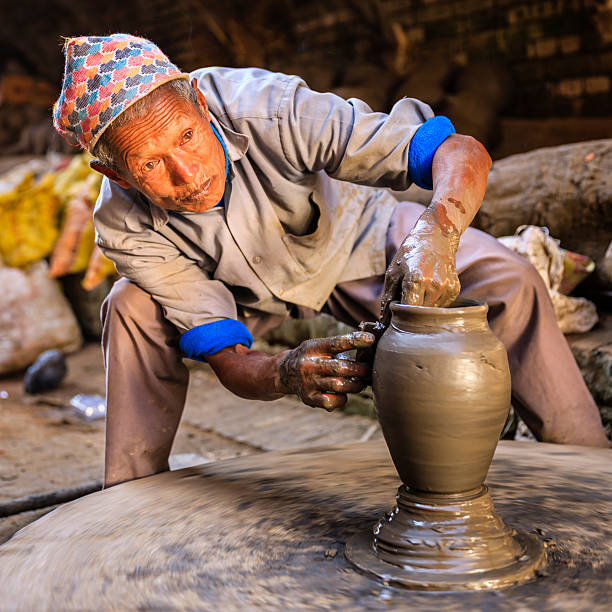
Tucked away in the ancient Bhaktapur City, Pottery Square, The Heart of Bhaktapur’s Traditional Craftsmanship is a vibrant and lively area that showcases Nepal’s traditional pottery-making culture. Known locally as “Bolachhen”, Pottery Square is a living museum where the ancient craft of pottery continues to thrive. It is a cultural hub where artisans, using techniques passed down through generations, shape beautiful earthenware by hand, providing visitors with an intimate look into Bhaktapur’s rich artistic heritage.
Pottery Square is one of the few places in Nepal where traditional methods of pottery-making are still actively practiced. Here, artisans use clay sourced from nearby areas and rely on foot-powered wheels and hand-molding techniques, a method that has remained unchanged for hundreds of years. Visiting Pottery Square is like stepping back in time to experience the true essence of craftsmanship that is deeply intertwined with Bhaktapur’s cultural identity.
Pottery Square is more than just a marketplace or a tourist spot. it is a window into Bhaktapur’s living history.
Conclusion about Bhaktapur City
The beauty of Bhaktapur City lies in its perfect fusion of culture, tradition, and architectural grandeur. It is a city where history lives on in every corner, where the past seamlessly blends with the present, and where every street, temple, and courtyard tells a story of artistic mastery and devotion. Its timeless elegance, peaceful atmosphere, and stunning landscapes make Bhaktapur a place of both beauty and soul.
Bhaktapur City is surrounded by stunning natural landscapes. From the city’s elevated points, you can catch breathtaking views of the rolling hills and the distant Himalayas. The nearby Nagarkot hill station, just a short drive away, offers some of the best panoramic views of the sunrise over the Himalayan peaks, adding a natural dimension to Bhaktapur’s charm.
Bhaktapur City FAQs
What is Bhaktapur City famous for?
Bhaktapur is a city where history lives on in every corner, where the past seamlessly blends with the present, and where every street, temple, and courtyard tells a story of artistic mastery and devotion. Bhaktapur City is also famous for its cuisine with the Juju Dhau, a type of yogurt made from buffalo milk being the most popular. Bhaktapur’s potters and handicraft industries are also known nationwide.
Is Bhaktapur a city or a district?
Bhaktapur is the smallest district of Nepal as well as City.
Why should people visit Bhaktapur?
The beauty of Bhaktapur City lies in its perfect fusion of culture, tradition, and architectural grandeur. It is a city where history lives on in every corner, where the past seamlessly blends with the present, and where every street, temple, and courtyard tells a story of artistic mastery and devotion. Its timeless elegance, peaceful atmosphere, and stunning landscapes make Bhaktapur a place of both beauty and soul.
What are the famous products of Bhaktapur?
Bhaktapur is famous for its pottery, woodwork, and handcrafted goods. haktapur City is also famous for its cuisine with the Juju Dhau, a type of yogurt made from buffalo milk being the most popular.
What is the best time to visit Bhaktapur City?
The best time to visit Bhaktapur is during the spring (March to April) and Autumn (October to November). During these seasons, the weather here is pleasant as the sky is clear and the Himalayas are visible.

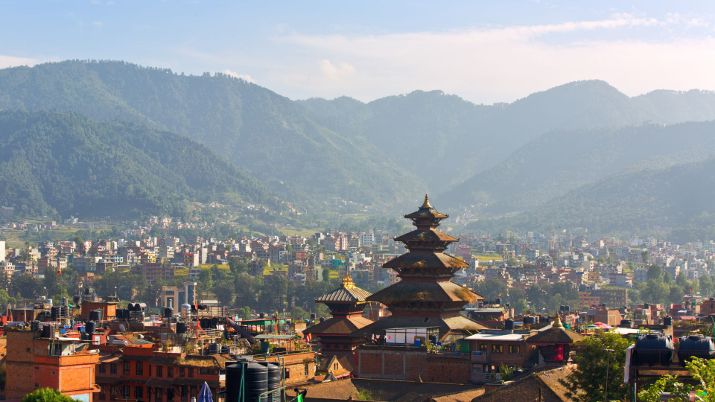
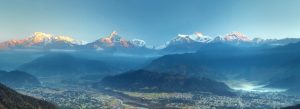
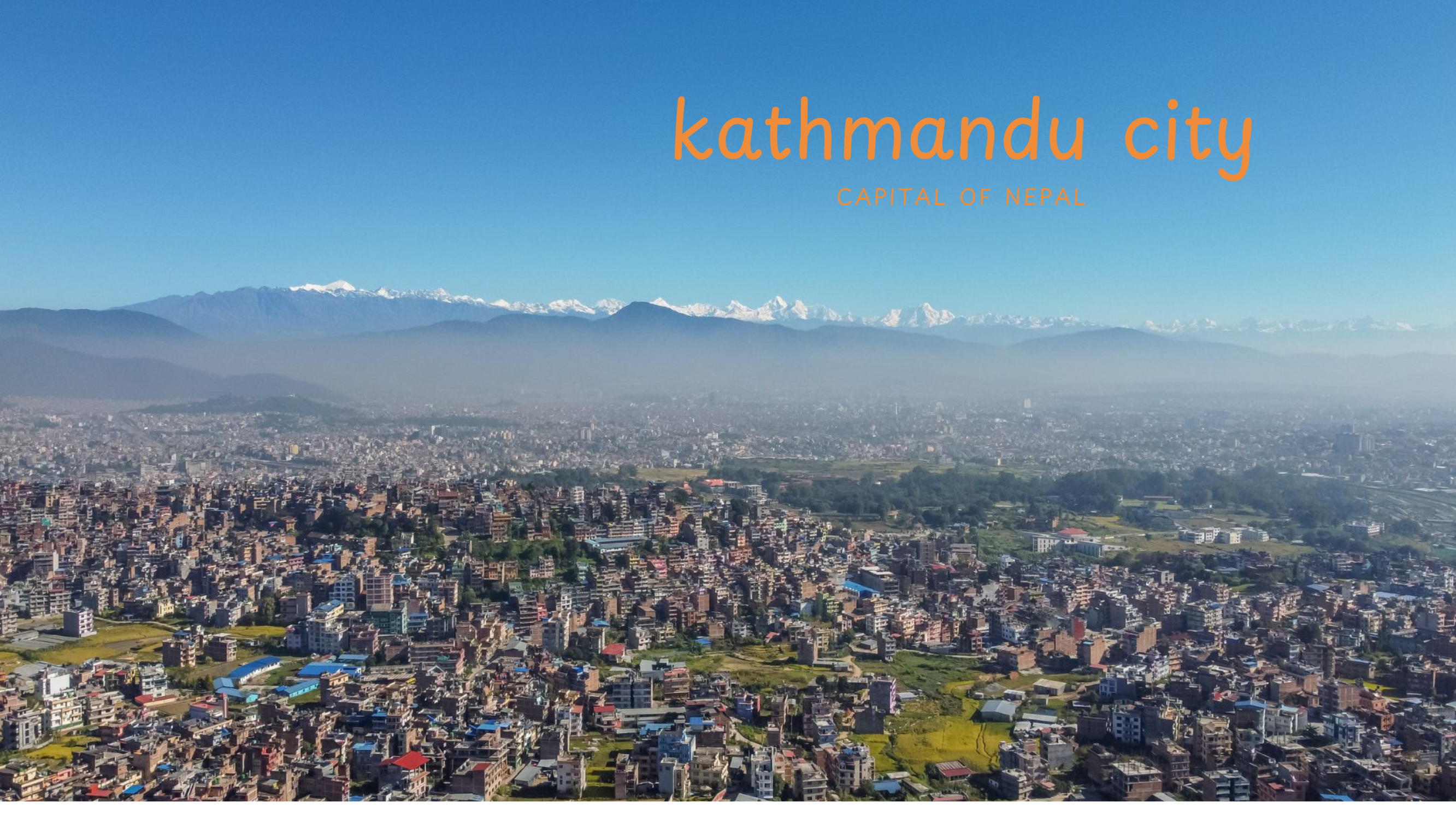
One thought on “Bhaktapur City: Top 10 Must Visit Stunning Places”